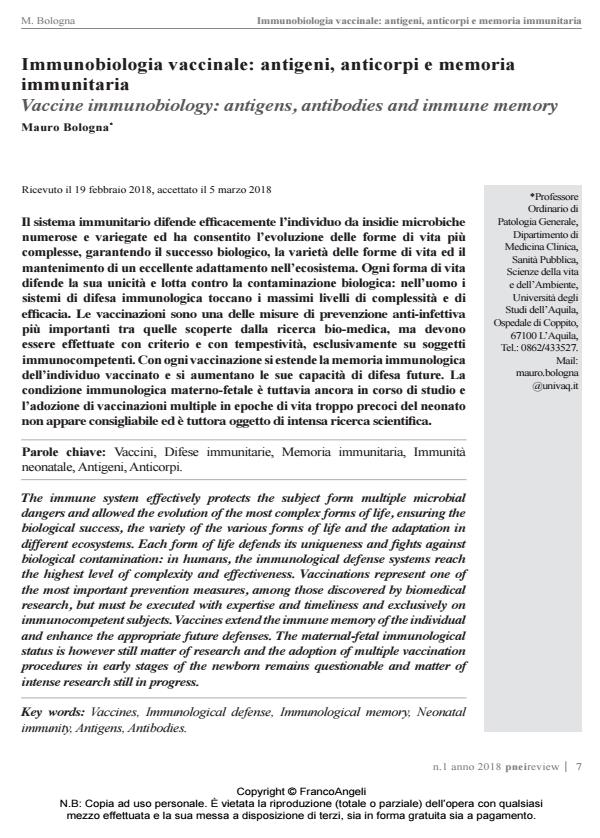Vaccine immunobiology: antigens, antibodies and immune memory
Journal title PNEI REVIEW
Author/s Mauro Bologna
Publishing Year 2018 Issue 2018/1
Language Italian Pages 11 P. 7-17 File size 1122 KB
DOI 10.3280/PNEI2018-001002
DOI is like a bar code for intellectual property: to have more infomation
click here
Below, you can see the article first page
If you want to buy this article in PDF format, you can do it, following the instructions to buy download credits

FrancoAngeli is member of Publishers International Linking Association, Inc (PILA), a not-for-profit association which run the CrossRef service enabling links to and from online scholarly content.
The immune system effectively protects the subject form multiple microbial dangers and allowed the evolution of the most complex forms of life, ensuring the biological success, the variety of the various forms of life and the adaptation in different ecosystems. Each form of life defends its uniqueness and fights against biological contamination: in humans, the immunological defense systems reach the highest level of complexity and effectiveness. Vaccinations represent one of the most important prevention measures, among those discovered by biomedical research, but must be executed with expertise and timeliness and exclusively on immunocompetent subjects. Vaccines extend the immune memory of the individual and enhance the appropriate future defenses. The maternal-fetal immunological status is however still matter of research and the adoption of multiple vaccination procedures in early stages of the newborn remains questionable and matter of intense research still in progress.
Keywords: Vaccines, Immunological defense, Immunological memory, Neonatal immunity, Antigens, Antibodies.
Mauro Bologna, Immunobiologia vaccinale: antigeni, anticorpi e memoria immunitaria in "PNEI REVIEW" 1/2018, pp 7-17, DOI: 10.3280/PNEI2018-001002